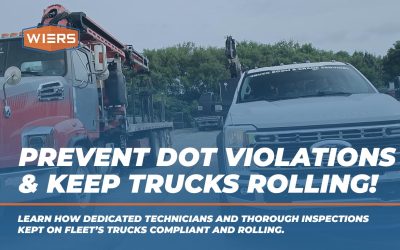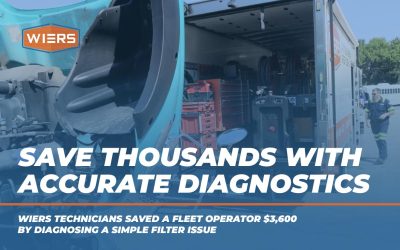Fleet Maintenance Records, Drivers & Connected Vehicle Technology
In this blog, we will share the importance of fleet maintenance records, engaging with drivers, and the importance of connected vehicle technology.
1. Review Maintenance Records Before You Buy
Maintenance systems should be easy to access and provide meaningful information about fleet spending and performance. This powerful information in your maintenance records can help streamline any new equipment decisions.
You can identify what systems are working well in your application and, perhaps, what changes need to be made before you buy new equipment. If that information is stored electronically, it’s going to make your job a lot easier as you’re doing the analysis. Also, be sure to get feedback from drivers as well as your service partner. They will have valuable insight and feedback.
2. Get Driver Engagement
Getting drivers involved in your fleet maintenance program is critical. Drivers are with the truck all day long. They see, hear and feel things that go wrong with the truck, so take their input seriously. One of the ways you can do that is to implement the Driver Vehicle Inspection Report (DVIR) process which allows drivers to document any small changes they detect in vehicle performance.
Be sure to work with drivers to identify what feels wrong with the truck, get those issues repaired, and do it on your schedule at a lower cost. When this process is implemented, drivers feel more engaged and buy-in to the program increases which will ultimately lead to lower costs, lower downtime, and happier drivers. It’s a win-win-win!
3. Use Technology to Improve Fleet Performance
Better information equals better decisions, and one way you can get better information is by using a telematics device. Many companies have implemented telematics software into their system, but many of them are only using it for the speed of the vehicle, location of the vehicle, or maybe even a braking incident. There is a whole other application for telematics.
Today’s telematics devices can send information on low oil pressures, high temperatures, or other electrical issues going on with the vehicle. If you can catch those items early, then you can repair them on your schedule and generally at a lower cost.
There are a lot of great telematics devices out there. While easy to implement, using telematics data to identify problems and cost-saving opportunities takes time and expertise. Rely on a solid service partner if you don’t have the time or staff to manage the data internally. If you would like to learn more about telematics or if you would like our help to implement this process please reach out to us at Wiers.com.
4. Develop a Fleet Replacement Plan
There are a lot of companies that have good replacement plans, but there are also a lot of companies that don’t. As your fleet ages and trucks start to break down, you have two options: one is to park the truck the other one is to fix it. Most customers need all their trucks, so they’re going to fix it. And when major repairs are needed, the dollars invested become significant perpetuating the problem because you want to run that unit longer and get your value back out of it.
The best approach is to have a replacement plan proactively. Know when you want to get rid of equipment and understand that’s flexible. The business is good, you execute the plan and if business takes a downturn, you can always push it out a year or so. But at least you’re asking for capital and you’ve got a plan, and you can proactively replace trucks. Don’t worry, you can always change it as you learn more.
No matter your service provider, use these tips to get the best out of your fleet.










